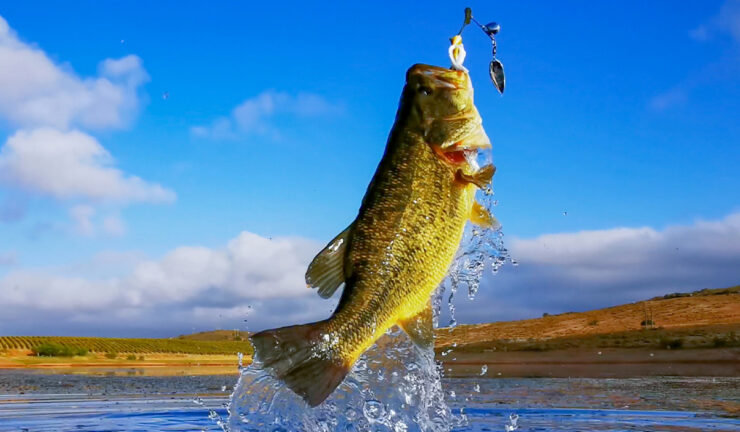Bass fishing is a multi-million dollar industry in the United States.
Bass are the second-most popular fish sought after by US Anglers (its close relative, the Crappie, is #1) in terms of numbers of people who fish for them, and #1 in terms of how much money is spent on equipment for them. More types of equipment are made for catching bass than for any other fish. It can make it difficult to select the best bass fishing gear and lures, especially for a beginner.
Table of Contents
ToggleWhat Are Bass?
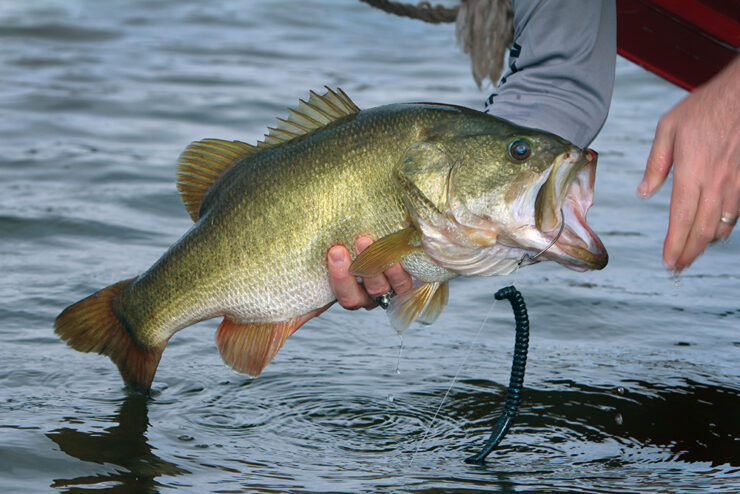
Bass are divided into two classes; the ‘True” basses, which include white, yellow, and striped bass, and the ‘Black’ basses, including Largemouth Bass, Smallmouth Bass, Kentucky Bass, Florida Bass, Peacock Bass, and Spotted Bass. The Black Basses are not really basses at all, but members of the sunfish family, which also includes crappie, bluegill, pumpkinseeds, redears, and other panfish. When we speak of bass fishing, as a rule, we are referring to fishing for the Black Basses.
Why is this so important to know? Because the best bass fishing lures differ for each type of bass. True basses and black basses have different anatomy, different habitats, and different habits.
While there may be some slight overlaps on what may constitute the best bass fishing lures for each, they are two distinctly different families of fish. True basses are open-water fish that travel in large schools and actively chase baitfish.
Black Basses are more solitary, relate to structure, and prefer to ambush their prey from cover.
They seldom travel to schools once they are grown. They also prefer warmer water than the true basses.
Keeping these differences in mind will help you locate black bass, and select the best bass fishing lures.
Catching Fish, Not Fishermen…
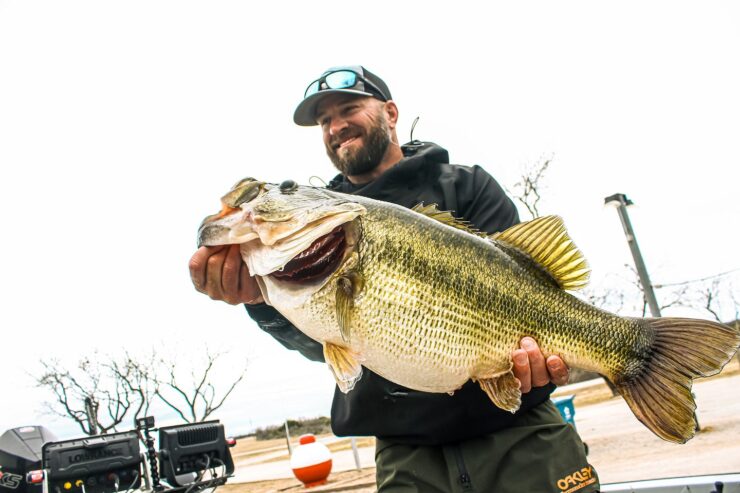
I want to help you wade through the myriad of bass lures, and select the best bass fishing lures for the type of bass fishing you want to do. It is not my intention to favor any particular brand, or type of lure (although we all have our favorites…), and I am not selling any lures. I just want to help you catch bass.
This information is aimed at the novice, newcomer, occasional bass angler, or those who would just like to know a little more about bass lures. I feel that these are the groups most in need of this information, and are often overlooked.
Most bass sites seem to be aimed more at the wannabe tournament anglers or are more interested in selling their particular line of lures rather than helping you find the best bass fishing lures for you (just my opinion, for what it is worth…). And there is nothing wrong with that, but it does make it difficult for a tyro to get any straight information.
My goal is to provide unbiased information on bass lures and equipment, from an experienced angler who is not tournament pro and has often had to get by with less…a lot less.
Best Gear To Catch Bass
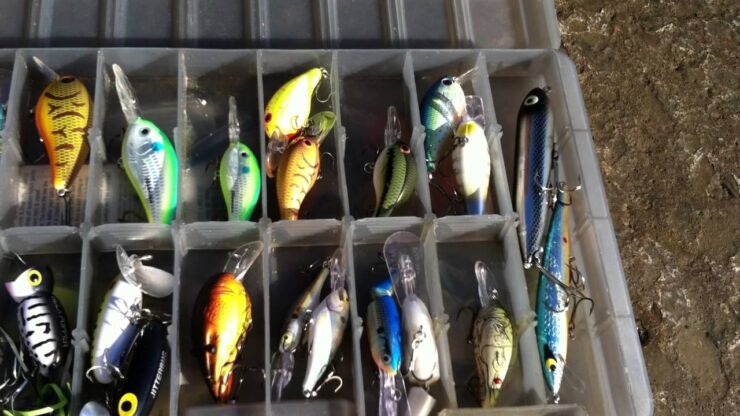
There are thousands of different lures on the market specifically designed for bass fishing.
The ads say they are all the best bass fishing lures there are. A lot of them are designed more to catch bass anglers, rather than any ambition to be crowned the best bass fishing lures.
One of the attractions of bass fishing is that it can be as modest, or complicated as you want it to be. It is definitely possible to successfully catch bass with nothing more than a cane pole and live bait from the shore.
Or, you can mortgage your house and buy a $30,000.00+ specialty bass boat with enough electronics in it to chase submarines with, $500.00 custom-made bass rods, and use $200.00 bass lures.
But a big price tag doesn’t mean you’ve bought the best bass fishing lures.
Great lures come in all price ranges, and under the right conditions, they are all the best bass fishing lures. Most of us are in-between these two extremes. Bass can be caught from a kayak, canoe, rowboat, raft, inflatable boat, a float tube, an inflatable SUP, wading, or right from the shore or dock. Sometimes, the best bass fishing lures are the ones you are using at the time.
Other times, the best bass fishing lures may be the ones you didn’t use. And the best bass fishing lures can be the exact same ones in either case. Such is the nature of bass….
Bassology 101: Key Factors To Catch Bass
There are really only two main considerations, other than blind luck, which does happen occasionally, that will determine your success at catching bass.
The first is knowledge of your quarry. There are people who have spent a lifetime learning about bass, their habits, and such…and they still don’t know everything. But the more you know, the better basser you will be.
You’ll need to learn where they go in each season and type of water, habitats they prefer, how they spawn, when and what they like to eat, and more…. There are hundreds of websites with information on bass, and I highly recommend checking them out.
Here is a quick rundown:
- Bass like the cover also called ‘structure’. This is anything a bass can hide in or around, pounce on unsuspecting prey when it comes near enough, and also provide protection from even bigger predators. It can be submerged vegetation, timber, rocks, drop-offs, creek mouths, channel ledges, etc… You will seldom ever find bass in open water.
- Once bass reaches breeding age, they seldom school, except maybe briefly to attack large schools of baitfish. When you’ve caught bass from a particular spot, there is no need to cast back to the same spot until another bass moves in (which may not take long…competition for good spots is intense at times).
- Bass aren’t usually very picky, and once you find them, they are pretty cooperative about lures. However, it’s been my experience that one almost “can’t fail” bass lure is a plastic worm, and purple is the best color by far. If I could only have one bass lure, this would be it.
- In Spring, morning, evening, and night in Summer, bass will usually be shallow, 2-15 feet deep. In Fall they may be either be deep or shallow depending on the local geography. In Winter, they will be deeper but come in shallow to feed during the warmest parts of the day.
The second factor is lure selection. This is where it gets intense. Most lures will catch bass sometimes… some more than others. The trick is to figure out which lures will entice the most bass at that particular time and place. This takes research and experience.
Some tips on lure selection:
- For beginners, I highly recommend French and Inline spinners to start out with. They are easy to use, relatively inexpensive, and work in a lot of situations. I can’t think of too many times I have used them and not caught something. My favorites are the Mepps Aglia and the Roostertail in Fire Tiger colors.
- I strongly suggest starting out with a medium-action spin casting combo, preferably one of the rod and reel packages available in a lot of stores, even Walmart. They are already matched and balanced for each other and are ready to fish right out of the package. Spin Casting reels are easy to use and will let you concentrate on learning to fish rather than fooling with equipment. One of the best all-around combos is the Zebco 33. It’s been around for over 63 years and still going strong, so they must be doing something right. I still fish with a 40-year old Zebco 33.
Here is my suggestion for starting out lure fishing for bass. You need:
A good tackle box. Starting out, I recommend one of the excellent tackle boxes from Plano or Flambeau and get one larger than you think you will need. Soft tackle boxes are more trouble and will work better for you once you learn what you like to fish with. Plano and Flambeau make a tackle box that will fit any budget, from just a few dollars for one that will hold over a dozen medium lures, to over $50.00 for one that can hold half of a tackle store. You really only need a dozen or so lures starting out.
My Beginner’s Bass Lure Selection
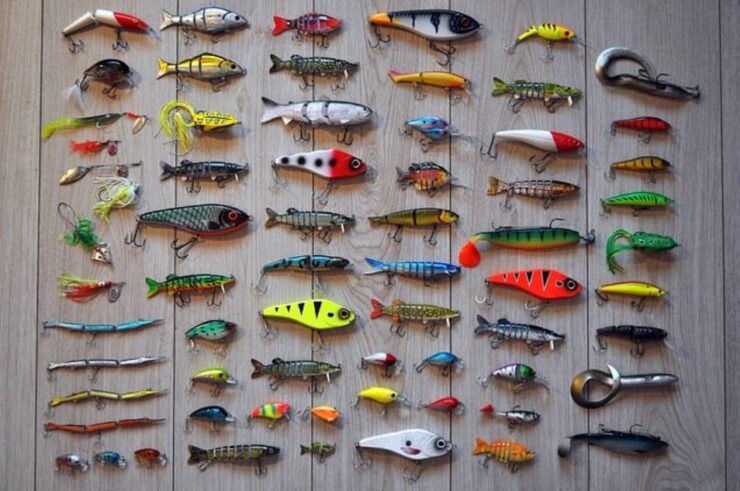
With these lures, if you find bass anywhere, one of these will catch them. These are just suggestions and any similar lures will accomplish the same purpose. These will catch bass from the surface all the way to the bottom in deep water.
- One package of purple Zoom or Culprit worms, in purple, and maybe black. You will also need some ¼ oz cone sinkers, and 1/0 worm hooks to rig these worms. I would suggest using the Texas Rig. You can find out how to do this on several websites. Just Google it.
- A couple of Mepps and Roostertail French Spinners, and maybe one or two Panther-Martins or Blue Fox inline spinners.
- A couple of spoons, at least one of which needs to be the Daredevil in red and white.
- A Heddon Chugger, a Bagleys Big O, a black Jitterbug, and a Lazy Ike.
- Six or so marabou jigs in black, red and white, and chartreuse.
- At least 2 Spro Frogs.
You will need to learn how to tie a basic knot, the Improved Clinch Knot. Just Google it and you will get dozens of results. I would suggest looking on YouTube for a concise set of instructions. This is really the only knot you need starting out with lures. Other than that, you need a set of line clippers (any old nail clipper will work just fine…), maybe a hook remover, although bass is not very prone to swallowing the hook that deep, a set of needle-nose pliers to remove hooks from fish mouths without getting stabbed in your hand, and a fillet knife and stringer or creel if you plan to dine on your catch.
Otherwise, release them gently and quickly so you and others can catch them again at a later date.
BTW, there is nothing wrong with taking a few homes to eat as long as you follow the local Creel and Possession limits. It does not hurt the ecosystem at all. You simply become part of the Food Chain.
Sometimes it helps to keep a fishing diary. It helps you to spot patterns in your local waters. Everybody of water is different, and what worked well in Carters Lake may be a total flop in Lake Murray.
It’s Just The Beginning…
This is just a very basic introduction to bass fishing to get you started. There is a lot of information on bass online, some good, some… well, you just have to evaluate it for yourself. Before you dive headfirst into the plethora of Bassology, I recommend just getting out and doing a little fishing first…get your feet wet, so to speak.
Once you get comfortable with the basics, then you can get into more detailed things, like fishing deep structure, drop shot fishing, vertical jigging, etc…
The main thing is to be sure and follow all the laws in your location, such as creel and size limits, and have a valid fishing license. Most of all …have fun.
Happy fishing
Meet Maria Alexander, the fearless adventurer steering the ship at KayakPaddling.net. Her mission? To convince you that life’s too short for dry land and that the best stories always start with “So there I was in my kayak…”
Related Posts:
- 12 Best Fishing Lures Ever 2024 - Baits That…
- Heavy Duty Fishing: 11 Best Rods And Reels For Big Fish 2024
- 10 Best Saltwater Fishing Boats - Ultimate Angling Adventure
- 9 Best Backpacking Fishing Rods 2024 - Lightweight…
- 12 Best Motorized Kayak 2024 - Start Your Aquatic Adventure!
- 10 Best Closed Face Reels 2024 - Game-Changers…

